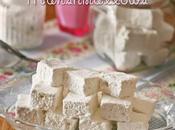![Come ti trasformo i 'vecchi' vestiti dei bambini [seconda parte] - How to refashion 'old' kids' clothes [part two] (guest post by Cucicucicoo) Come ti trasformo i 'vecchi' vestiti dei bambini [seconda parte] - How to refashion 'old' kids' clothes [part two] (guest post by Cucicucicoo)](http://m2.paperblog.com/i/181/1814235/come-ti-trasformo-i-vecchi-vestiti-dei-bambin-L-5W3W29.png)
Come promesso, ecco a voi la seconda parte dell'utilissimo tutorial di Cucicucicoo su come trasformare in capi estivi i vecchi vestiti dei bambini: oggi tocca ai pantaloni! Se vi siete persi la prima parte, la trovate qui. Buona lettura!
As promised, here's Cucicucicoo second part of her tutorial on how to trasform old kids' clothes into summer ones: and today we're talking about pants! ...and if you miss the first part, you can find it here.

Oggi facciamo qualcosa per la metà inferiore. Quando i pantaloni diventano troppo corti per gambette che crescono a tutta velocità ma vanno ancora bene in vita, perché non trasformarli in pantaloncini o pinocchietti? C'è un tutorial completo sul mio blog su come cucirli, che è sempre preferibile, ma è anche possibile farlo senza cucire usando un prodotto per fare gli orli e un ferro da stiro.
Now let's do something about about the lower half. When pants become too short for quickly-growing legs but still fit well around the waist, why not transform them into shorts or pedal-pushers/capris? There's a full tutorial on my blog on how to sew them, which is always preferable, but it's also possible to do this without sewing by using a special product and an iron.

Se i pantaloni sono di jersey/maglina (tessuto di T-shirt) li potete anche tagliare e lasciarli così. Ma la maggior parte dei pantaloni sono di tessuti che si sfilano. L'esempio che uso è una gamba tagliata di quel tutorial, quindi fate finta che ci sia un pantalone intero attaccato! Per prima fate indossare il pantalone e segnate dove dovrebbero finire i pantaloncini/il pinocchietto con una spilla da balia. Con il righello, fate una linea (uso un pennarello lavabile apposto per segnare le stoffe) 2 1/2 cm sotto la spilla e tagliate lungo quella linea.
If the pants are jersey (again, t-shirt material), you can just cut them and leave them so. But most pants are out of fabric that frays. The example I'm using here is a remaining leg cut off from that tutorial, so just pretend there is a whole pair of pants attached! First put on the pants and mark where you want them to go up to with a safety pin. Using a ruler, make a line (I use a washable fabric marker) 2 1/2 cm below the pin and cut along that line.

Togliete la spilla. Con il pantalone alla rovescia, fate un'altra linea 5 cm sopra il taglio. Poi piegate la stoffa in modo che il bordo arriva sulla linea. Così dimezzando il tessuto, la piega sarà dove avete messo la spilla. Stirate bene questa piega con il vapore, se permette il tipo di tessuto.
Take out the pin. With the pants inside out, make another line 5 cm above the cut. Then fold the fabric so that the edge is along that line. This way the fold will be where you'd put the pin. Iron this fold very well with steam, if the fabric allows it.

Nelle mercerie esistono dei veli termoaderenti che si possono usare per fare delle applicazioni su stoffe o di fare orli. Purtroppo non sono tutti della stessa qualità. In passato ho comprato un tipo che era talmente tanto una schifezza che mi ha rovinato il progetto al punto di non ritorno e ho dovuto buttare tutto. Oramai uso solo la marca Heat-n-Bond (uso Heat-n-Bond Lite), che funziona benissimo e si vende a rotoli, quindi si può usare anche per applicazioni grandi. Chiedete consiglio in merceria per una marca di qualità.
There are various types of ironable adhesive that can be used for appliqué or hemming. Unfortunately they're not all high quality. In the past I bought one brand that was such junk that it ruined a project of mine to the point of no return and I had to throw out the whole thing. Now I only use the brand Heat-n-Bond (I use Heat-n-Bond Lite), which works wonderfully and is sold in rolls, so you can also use it for big appliqué projects. Ask someone in your craft shop for a suggestion of which brand to use.
Questo prodotto ha due lati: uno di carta e uno adesivo. Aiutandovi con il righello e matita, disegnate dei rettangoli larghi 2 cm e lunghi appena meno della larghezza un lato piegato della gamba. Ne vorrete fare quattro. (Io ne ho fatto solo due perché l'esempio è una sola gamba.)
This product has two sides: one covered in paper and one adhesive one. Using a ruler and pencil, draw four rectangles 2 cm wide. The length will be slightly less than the width of one folded leg. (I only have two because I just did one leg here.)

Tagliate questi rettangoli. Vedete la differenza fra i lati? La striscia sopra è il lato con la carta e la striscia sotto quello adesivo.
Cut out the rectangles. See the difference between the two sides? The strip above is the one covered in paper and the one below is adhesive.

Posizionate la striscia tra la linea e la piega con l'adesivo verso il basso. Seguendo le istruzioni per la marca di velo usato, stirate sopra il lato con la carta.
Position the strip between the line and the fold, adhesive side down. Following the instructions for your brand of adhesive, iron over the paper side.

Togliete la carta e rimane l'adesivo sul tessuto.
Pull off the paper and the adhesive remains on the fabric.

Piegate di nuovo il tessuto sopra l'adesivo e, di nuovo seguendo le istruzioni, stirate il tessuto da entrambi i lati. Questa tecnica funziona meglio con i tessuti più leggeri. Se lo fate con tessuti più pesanti, come il mio esempio, potrebbe non durare un numero infinito di lavaggi, quindi potrete fare due punti a mano con ago e filo, giusto per essere più sicuri che il vostro lavoro rimane intatto.
Fold the fabric back over the adhesive and, again following the instructions, iron the fabric from both sides. This technique works best with lighter fabrics. If you do it with heavier fabrics, like my example, it probably won't last an infinite number of wshes, so you could always just do a couple hand stitches with needle and thread to make sure you work stays intact.

Ed ecco il tuo orlo nuovo e non-cucito per i pantaloncini nuovi! Non è una bella sensazione rifare il guardaroba per l'estate senza spendere neanche un centesimo?! Buon refashioning!
And there's your brand new unsewn hem of your new shorts! Doesn't it feel great to refurnish your summer wardrobe without spending a cent?! Happy refashioning!
Cuci, un mega grazie come blogger... e come mamma!
Io vi aspetto giovedì... non ci crederete ma sono riuscita a 'incastrare' anche la Maestra Valentina! Intanto al solito vi ricordo di insirire le vostre idee nella Raccolta di Riciclo Creativo per Bambini e di correre a partecipare al Concorso per le Vacanze Riciclose e Fai da Te in collaborazione con Riciclattoli e Artefatti: non manca più tanto tempo al 10 giugno ormai, e ci sono un sacco di bei premi in palio! A presto!





